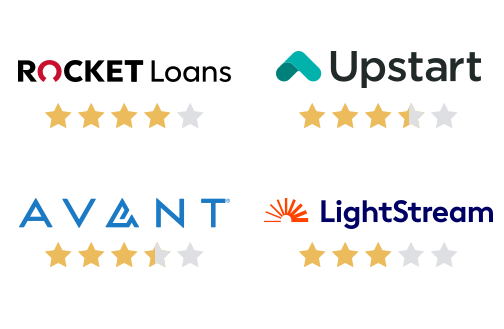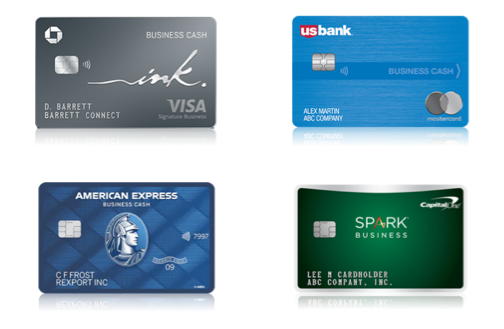Answer six questions to help us improve your experience for a chance to win a $200 e-gift card.
Business Loan Calculator


Don't meet these qualifications? Check out these funding options:
We are committed to sharing unbiased reviews. Some of the links on our site are from our partners who compensate us. Read our editorial guidelines and advertising disclosure.

Taking out a loan for your small business? Congratulations! Getting a small-business loan opens up all sorts of opportunities for business growth, making it an exciting financial milestone for many businesses.
Of course, that exciting milestone could become a shocking and disappointing one when you find out that your $100,000 loan will cost you $152,000 by the time you pay it back.
So before you borrow, use a financial, or loan calculator to figure out the actual cost of your small-business loan. It will save you from nasty sticker shock and help you find the right loan for your small business.
Use our best small business loans guide to discover the best lender for you.
How to use a small-business loan calculator
To get the most accurate total cost estimate, you’ll need to gather a little information before you use a business loan calculator:
- Loan amount (how much you’re borrowing)
- Interest rate
- Loan term (the time you have to repay the loan, which affects your number of monthly payments)
- Extra monthly loan payment amount (if you plan to pay more than the minimum)
You don’t need to have the exact numbers—after all, you probably won’t know your final interest rate until you get approved for your loan—but more accurate numbers will give you more accurate results (obviously).
Once you put in all those numbers, click the button to have the calculator do the math for you. And there you go—the total cost of your loan.
You can also use a loan calculator to see how different rates, terms, or payments would affect the total cost of your loan. So if you’re deciding between a loan with a longer repayment term and a lower rate and a loan with a shorter repayment term and a higher rate, you can use a calculator to find out which one offers the better deal.
But that’s not the only thing a loan calculator can show you.
By signing up I agree to the Terms of Use.
How to get the most out of a loan calculator
Like we said, a loan calculator can show you the total cost of your loan (the loan principal plus any interest you’ll owe). And that’s great for seeing how much a loan will cost your business in the long run (because boy, interest can add up quickly).
But a loan calculator can give you plenty of other useful information―information that can help you make smarter, more informed decisions before you take out a loan.
A loan calculator should show you the following:
- Total loan payback amount
- Estimated monthly payment
- Percentage of total repayment that goes to principal vs. interest
- Principal vs. interest amount for each payment (an amortization table)
So if, for example, you’re trying to decide between a loan with a longer repayment term and a lower interest rate (say, 10 years and 5%) and a loan with a shorter repayment term and a higher interest rate (like 7 years and 8%), the loan calculator can help you decide which to go with―whether you want the lower total payoff amount or the lower monthly payment.
Likewise, a loan calculator can see if your monthly loan payment will fit in your business budget, or if it’s worth shopping around for a better interest rate.
Of course, you need to remember that a loan calculator only gives you estimates. So make sure you ask a lender for hard numbers before committing to a loan.
Thankfully, a calculator’s estimates can give you plenty of information to help you choose the best loan for your business.
To apply for a loan, you’ll need to provide plenty of information. Expect to be asked for your credit score, personal and business tax returns, business financial statements, any collateral you have to offer, and a business plan.
Loan cost factors
As you compare and apply for the best small-business loans, you should know how various factors affect your total loan cost. In this section, we'll take a quick look at some of the biggest factors.
Loan amount
The most significant factor in your total loan cost is the size of the loan you take out. For example, a $500,000 loan will cost you more than a $10,000 loan because, obviously, it requires you to pay back $500,000 and not just $10,000.
But that’s not the only reason. Other loan costs, like interest rates and fees, often get calculated as a percentage of your loan amount. As a hypothetical example, if your interest and fees are 10% of your loan amount, a $100,000 loan would cost you $10,000 in fees, while a $50,000 loan would only cost $5,000 in fees.
So as you apply for a small-business loan, make sure you’re applying for the right size loan. You want enough money to cover your needs—whether you’re using it to purchase equipment or hire an employee or revamp your marketing strategy—but don’t assume that bigger is better. Because in this case, a bigger loan comes with bigger fees.
In 2017, the average business loan extended by commercial banks was $663,000.1 Alternative lenders have a much lower average loan size, though. The average loan through Lendio, for example, was a much more modest $26,873.2
Interest rates
The interest rate on your loan also has a huge effect on your total loan cost.
To illustrate, think about a $50,000 five-year loan. With a 6% interest rate, your monthly payment would be $966.64 for a total cost of $57,998.40. With a 12% interest rate, your monthly payment goes up to $1,112.22 for a total cost of $66,733.34. (You can try it for yourself on a business loan calculator.)
While the obvious solution is to get a low-interest rate, whether you are getting a U.S. Small Business Administration (SBA) loan or a cash advance loan, that’s not always easy. Several factors affect the interest rate you’re offered, including your credit score, loan size, term length, cash income, and business revenue. Generally speaking, better credit history and business health lead to lower interest rates.
Even the lender you use can change your interest rate; alternative lenders typically offer higher rates than traditional lenders (but alternative lenders also have less strict application requirements).
We haven’t found any substantiated stats on the average loan rate, but we can tell you some typical rates. Traditional lenders offer business term loan rates as low as 5% and as high as mid-20%. Loan rates from alternative lenders start around 7% and go as high as 36%.
Of course, the impact of your interest rate will depend on your loan’s term, or the number of payments you make. A longer term will accrue more interest, while a shorter term will accrue less.
Closely related is your payment schedule. For example, if you have an amortizing loan, each payment goes toward both the interest and the principal (the loan amount), but your interest payments decrease as your principal decreases. So you might start off with a payment that goes 90% toward interest and 10% toward the principal, but eventually you’ll make payments that go 90% toward the principal and 10% toward interest.
Since this interest is calculated according to your remaining principal, you can make prepayments (payment submitted before your payments are due) to reduce the amount of interest you end up owing—and consequently, your overall cost.
(If you get an amortizing loan, you can ask your lender for an amortization table that shows you the details of how prepayment affects your total cost.)
Fees
Many lenders charge fees when you borrow a loan. For example, you might have an origination fee, a processing fee, or a packaging fee. Depending on the lender, these may be flat fees or a percentage of your loan amount.
Keep in mind that many loan providers take the cost of your loan fees out of the loan they give you. So if you get approved for $10,000, but $500 of that amount is in fees, you’ll only get $9,500. In that case, fees shouldn’t affect the total amount you pay for your loan (though it could cause problems if you expected to use the full amount). But not all lenders do this, so definitely ask about fees before committing to your loan.
Then there are the fees that come when you pay back the loan. You probably already know that lenders don’t like it when you pay late, so most have a late payment fee when you miss your monthly payments. But some lenders also don’t like it when you pay early, so they charge prepayment penalties.
While you might see them used interchangeably as you look at lending, interest and APR are not the same thing. Your APR includes not only your interest rate but also any fees you have to pay for the loan. In theory, this makes it more descriptive of the actual loan cost. Learn more in our guide to APR.
Additional resources
And for everything else, there’s our Ultimate Guide to Small-Business Loans.
Interested in learning more about choosing a business loan and finding the right loan for your business? Good—we have plenty of other loan resources to help you do just that.
First, we suggest you take a look at the types of business loans available from alternative lenders. While brick-and-mortar banks offer some of the best deals, alternative loans are often easier (and sometimes faster) to get.
Next, you can peruse our resources on specific kinds of business loans. If, for example, you want to pay off your small-business loan in less than two years, you can check out the best short-term business loans. If you’re interested in loans that don’t require any collateral, we have a list of the best unsecured business loans. And if you’re concerned about your credit history affecting your eligibility, you can explore options with our business loans for bad credit.
The takeaway
Whether you’re using your small-business loan to get some additional working capital, help your cash flow, or hire a new employee, your financing choices can have a big impact on your business’s financial health.
So before you become a borrower, make sure you clearly understand the total cost of your loan. Don’t be afraid to ask your lender plenty of questions about things like your term, rates, and fees. And once you have that information, use a business loan calculator to get a clear picture of your loan’s true price.
Buying real estate with your business loan? Check out a commercial loan calculator to get a more accurate total cost.
Related reading
Disclaimer
At Business.org, our research is meant to offer general product and service recommendations. We don't guarantee that our suggestions will work best for each individual or business, so consider your unique needs when choosing products and services.
Sources
- Board of Governors of the Federal Reserve System, “Survey of Terms of Business Lending - E.2.” Accessed December 6, 2022.
- Lendio, “Lendio Surpasses $500 Million in Business Loans Originated through Its Online Marketplace.” Accessed December 6, 2022.






